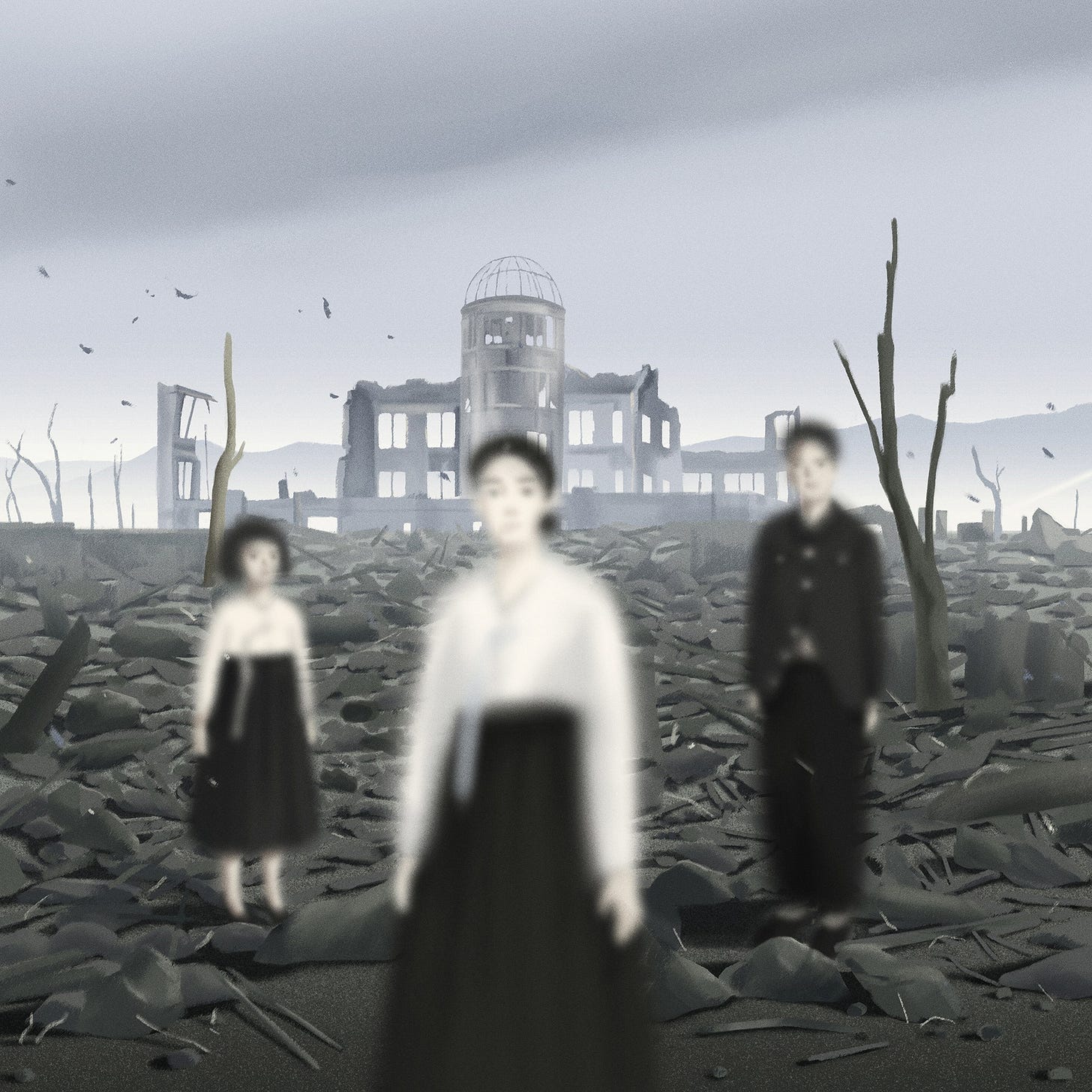New Attention on Long-Overlooked Korean Victims of the Atomic Bomb
A major piece in The New Yorker and my own experience.
Greg Mitchell is the author of more than a dozen books and now writer/director of three award-winning films aired via PBS, including “Atomic Cover-up” and “Memorial Day Massacre.” Now watch trailer for acclaimed 2025 film “The Atomic Bowl” coming to PBS in July. You can still subscribe to this newsletter for FREE. Sustain this newsletter by ordering one of his books.
With nuclear fears rising (again) in the world amidst the latest Israel-Iran war, not to mention Ukraine-Russia, I will be posting more at this Substack, which was launched two years ago for my nearly daily commentary/history related to Christopher Nolan’s “Oppenheimer.” And my new film, see below, will arrive via PBS almost two years to that day.
Today, I will just point you to a major new New Yorker piece on a long overlooked issue: the thousands of Korean victims of the U.S. atomic bombings of Hiroshima and Nagasaki. It’s written by E. Tammy Kim, whose excellent writing in the past has focused more on labor issues.
I wrote about this subject long ago, as I was among the few Americans to delve into this decades ago, after my month in the atomic cities in 1984. I went out of my way then to interview the country’s leading Korean survivor activist and met him at the monument to these victims in the Hiroshima Peace Park. Many Koreans were brought to Japan as forced laborers during the war and naturally suffered in the bombings—and then received so much less attention afterward, even as they battled the same atomic stigma and radiation after-effects as tens of thousands of Japanese non-combatants.
Here’s just one brief excerpt from the Kim article. Note: She is wrong about one thing. She declares that Hiroshima and Nagasaki were both major industrial and military centers. Nagasaki housed many large weapons factories, to be sure, but almost no soldiers were stationed there and when the atomic bomb exploded nearly all of the victims were non-combatants (mainly women, children, the elderly and laborers, including Koreans).
Where else can justice be found? The theorist David Eng offers the story of the Sahtu Dene, a First Nations community in northwestern Canada, whose men mined the uranium used by the U.S. to bomb Japan. In the late nineties, a delegation of Sahtu Dene travelled to Hiroshima to acknowledge their role in that destruction, despite their own ordeals with cancer and poverty. They visited a hospital for Korean hibakusha, and apologized, person to person. The “dispossessed Sahtu Dene,” Eng writes, did what no government—not Canada or the U.S., Japan or South Korea—was willing to do.
Just a quick reminder here to report that my new award-winning film, “The Atomic Bowl: Football at Ground Zero—and Nuclear Peril Today,” will start streaming at PBS.org and via PBS apps and public TV stations on July 12. Here is a link to watch a brief PBS preview. More links and early response to the film below.
»»If you are a media/film person and wish to view the film in advance, and/or interview me, you can contact me via Substack please and thank you (or write to: epic1934@aol.com)
Summary:
A timely new documentary on the disturbing and long-forgotten 1946 U.S. military all-star game on a killing field in Nagasaki where 80,000 had perished just weeks earlier--and the vital lessons and warnings for today as nuclear dangers proliferate and the civilian death toll in current wars surge.
Narrated by Peter Coyote. Produced by Lyn Goldfarb. The 80th anniversary of the atomic bombings arrives in August.
“Even if Hiroshima remains pre-ëminent in our historical memory, Nagasaki may be of greater consequence in the long run." --Nuclear historian Alex Wellerstein, The New Yorker
Now a few more links:
Web site for film:
https://gregmitchphoto.com/atomicbowl/
Two-minute trailer:
My piece here on the tragedy of the Nagasaki bomb.




